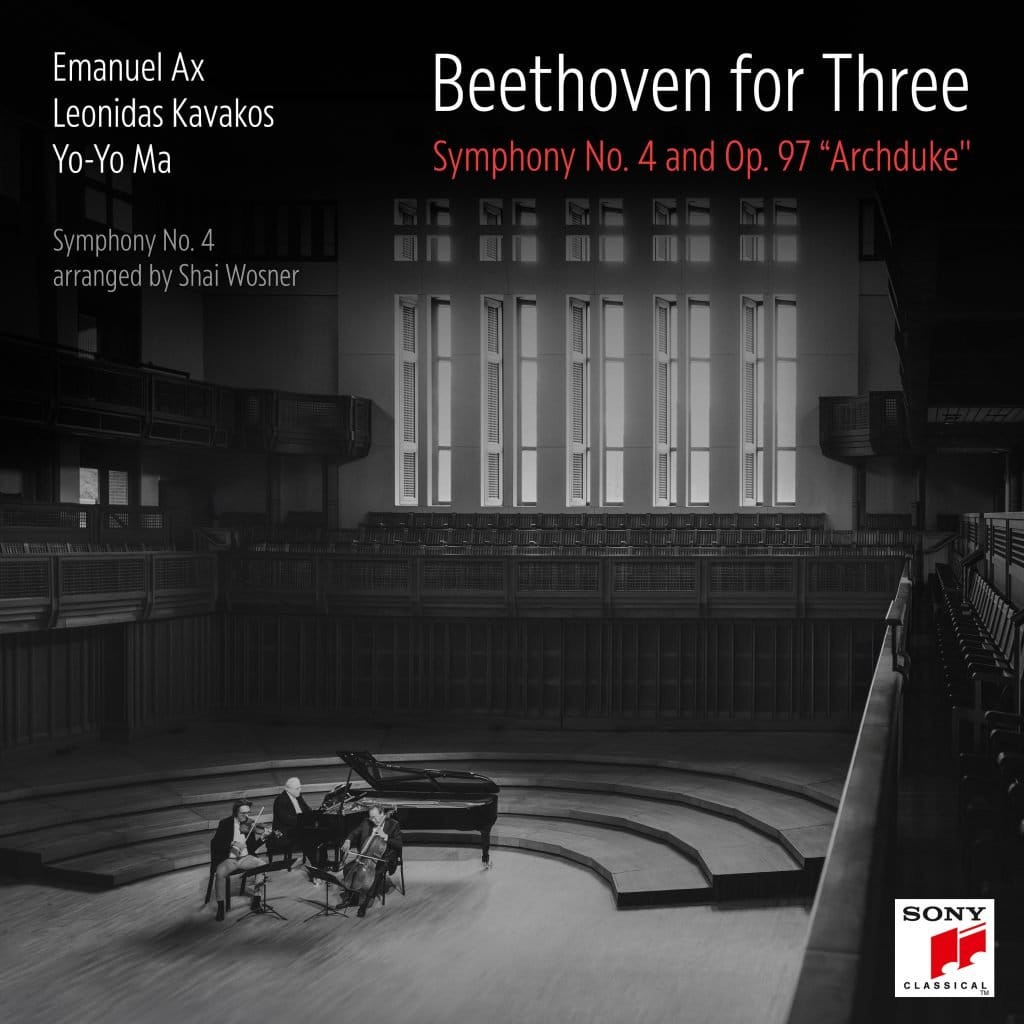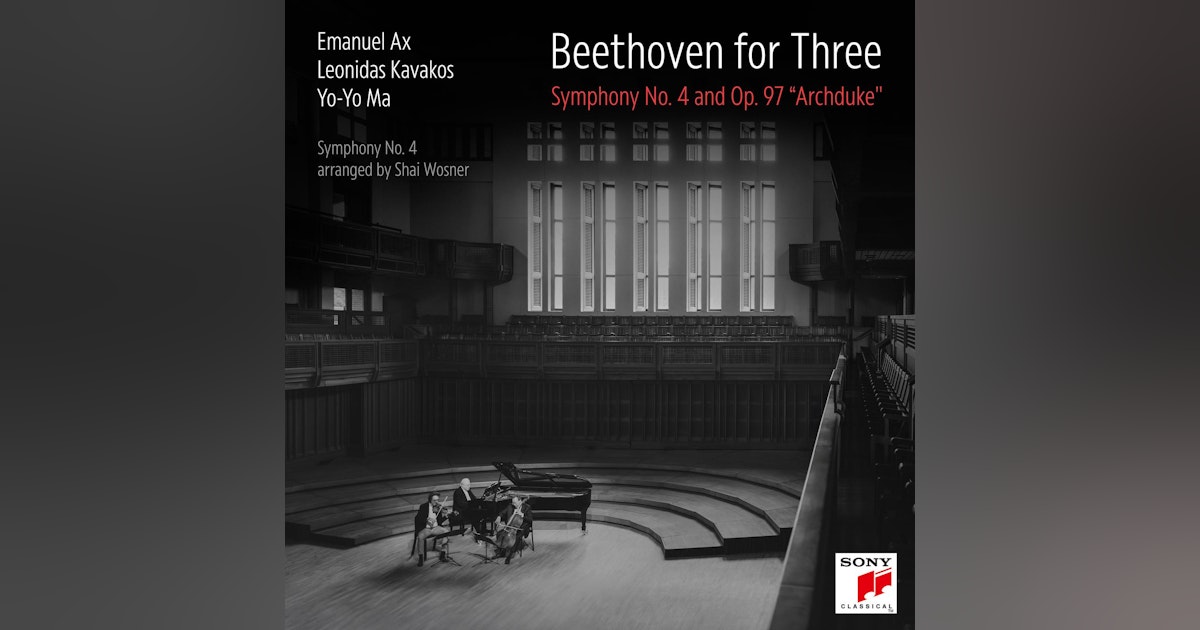
A coupling here of Beethoven’s “Archduke” Trio with Shai Wosner’s aangement of the Fourth Symphony. We have seen previous volumes in this series here and here, and the combinations have worked well.
Here’s the promo video; you will get to hear parsons of the “Pastoral” in trio arrangement, too, as the players discuss the appeal, and the historical background, to arrangements of larger works for smaller forces:
And this from Yo-Yo Ma:
“We all feel that being able to participate in a symphony is such a wonderful thing to do. One of the things that has separated people since recording began is the categories that we put people in, in which chamber musicians, orchestra players, people who play concertos, people who do transcriptions, people who compose, people who conduct, are all viewed as separate categories with no overlap. That siloed thinking discourages actual creativity and collaboration between people. And so we feel that one of the things that is really important to do today is to actually go back to the first principles of music, the simple interaction between friends who want to do something together.”
The Fourth Symphony works well for piano trio, not least its opening: the sense of weightlessness and suspended time in the opening is remarkable, almost spooky (maybe they should have coupled this with the “Ghost” Trio!). The arraignment is by Shai Wosner:
Ax and Ma are on great form; Kavakos is occasionally a little shill up top here, unfortunately; Wosner’s arrangement works best in the lyrical sections; the full-on dynamism feels just a touch shallow.
The sense of suspended openness that was heard at the opening of the symphony returns with the Adagio, a lovely piece of piano trio chamber music here, more intimate than its orchestral incarnation. Ma’s cello sings beautifully against the piano’s imitation of pizzicato; and some moments really do sound as if this was originally for trio!:
The three bring real fire to the Allegro vivace that follows, with a nicely contrasing Trio. The finale, too, has plenty of drive, but again I find Kavakos too shill a lot of the time:
It does always feel like coming home on these discs to arrive at “pure” Beethoven, whatever the stimulation of the arrangements; here it is the “Archduke” Trio (No. 7 in B flat, Op. 97) hat is lighted upon. The three play with real affection, while revealing in the darker shades of the first movement. Here, it all gels beautifully. If you’re looking for a dynamic first movement, perhaps look elsewhere, but this, to my ears, is something special:
This is fresh reading full of delights; it’s as if all three imbue the performance with a sense of curiosity, despite the players’ familiarity with the score, and with this we, too, hear it anew. The Scherzo, too, is full of revelations, full of passages that sounds new even today, a “slithery” transitional passage contrasting with a sense of almost balloom-like dance:
Perhaps it is the slow movement that defines this performance as so special: a whole world in and of itself, Ax’s playing so beautifully calibrated, Ma and Kavakos in perfect alignment. This could now be my top reading of his movement:
The finale has a gloriously carefree gait, not to mention a certain gruffness at certain points that is inherently Beethovenian:
We previously had the “Archduke” in Gsteig, Switzerland, a post that includes links to two very significant “Archduke” performances (link).
The present disc is available at Amazon at a whopping 7% off at this link. Streaming below:









